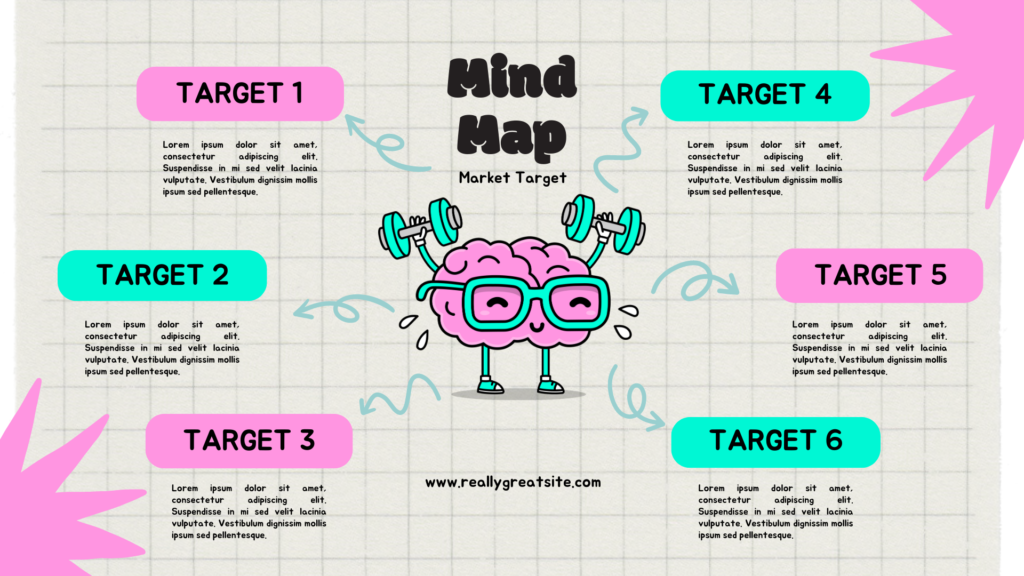Mind maps are not only powerful tools for organizing information and enhancing creativity, but they can also revolutionize the way we study and learn. By leveraging the brain’s natural processes and visual thinking, mind maps provide a structured yet flexible approach to absorbing and retaining knowledge. In this article, we will explore how to use mind maps effectively for studying and learning, unlocking your full academic potential.
Understanding the Mind-Map Learning Method
The mind-map learning method utilizes the unique features of mind maps to engage both sides of the brain, promoting active learning and knowledge integration. By connecting ideas, concepts, and facts in a visually structured manner, mind maps facilitate comprehension, recall, and critical thinking. Here’s how you can leverage mind maps for effective studying and learning:
1. Organize and Summarize Information
When preparing for exams or studying complex subjects, mind maps offer an excellent way to organize and summarize information. Start by identifying the main topic or subject you’re studying, and use it as the central idea in your mind map. Branch out from the central idea and add subtopics, key concepts, and supporting details. The visual hierarchy of a mind map helps you grasp the overall structure and relationships between different components of the subject.
2. Enhance Understanding and Retention
Mind maps promote understanding by facilitating the connection between related ideas and concepts. Use colors, symbols, and images to visually represent different elements and create visual associations. When reviewing your mind map, focus on making connections and identifying patterns. This approach enhances comprehension and aids in long-term retention.
3. Make it Interactive and Engaging
To make your mind map studying session more interactive and engaging, consider adding interactive elements. Include links to relevant online resources, attach additional notes or explanations, and incorporate mnemonic devices or memory aids. By making your mind map visually stimulating and interactive, you create a multi-sensory learning experience that enhances engagement and information recall.
4. Review and Reinforce Knowledge
Regular review is crucial for retaining information. Allocate dedicated study sessions where you revisit your mind maps to reinforce your knowledge. As you review, focus on the connections between different ideas and concepts. By repeatedly accessing the information through the mind map, you reinforce neural pathways and make the knowledge more accessible for recall during exams or discussions.
5. Collaborate and Share
Mind maps can be excellent tools for collaborative learning. Share your mind maps with classmates or study groups to exchange ideas, fill gaps in knowledge, and gain new perspectives. Collaborative mind mapping sessions foster discussions and active participation, facilitating a deeper understanding of the subject matter.
6. Adapt to Your Learning Style
One of the greatest advantages of mind maps is their flexibility. Adapt your mind maps to suit your unique learning style. Experiment with different structures, colors, and formatting techniques that resonate with you. Some learners prefer a more linear and hierarchical mind map, while others may opt for a more organic and free-flowing structure. Find the approach that enhances your learning experience and maximizes your understanding.
FAQs
- Are there any research studies on the effectiveness of mind maps for studying and learning? Yes, research studies have explored the benefits of mind maps for studying and learning. Studies by Khakzar and Suthers (2010) and Sánchez, Llamas, and Pomares (2016) highlight the positive impact of mind maps on information organization, comprehension, and retention.
- Can mind maps be used for different subjects and academic levels? Absolutely! Mind maps can be used across various subjects and academic levels, from science and mathematics to languages and humanities. The versatility of mind maps makes them adaptable to different learning contexts.
- How can I incorporate mind maps into my study routine? Incorporating mind maps into your study routine is simple. Start by identifying the main topics or subjects you need to study, create mind maps for each topic, and use them as visual study aids. Regularly review and update your mind maps as you progress in your studies.
- Are digital mind maps as effective as hand-drawn ones for studying? Research suggests that both digital and hand-drawn mind maps can be effective for studying. It ultimately depends on personal preference and comfort. Experiment with both approaches to determine which one works best for you.
- Can mind maps help with exam preparation? Yes, mind maps can be valuable tools for exam preparation. They enable you to review and consolidate information, identify key concepts, and visualize connections between different topics. Regularly revisiting your mind maps can boost your confidence and recall during exams.
Conclusion
Mind maps offer a dynamic and visually engaging approach to studying and learning. By organizing information, enhancing comprehension, and fostering active engagement, mind maps empower students to unlock their full academic potential. Experiment with mind maps in your study routine, adapt them to your learning style, and enjoy the benefits of a structured and interconnected approach to knowledge acquisition







